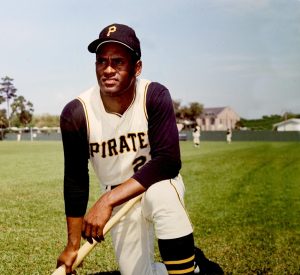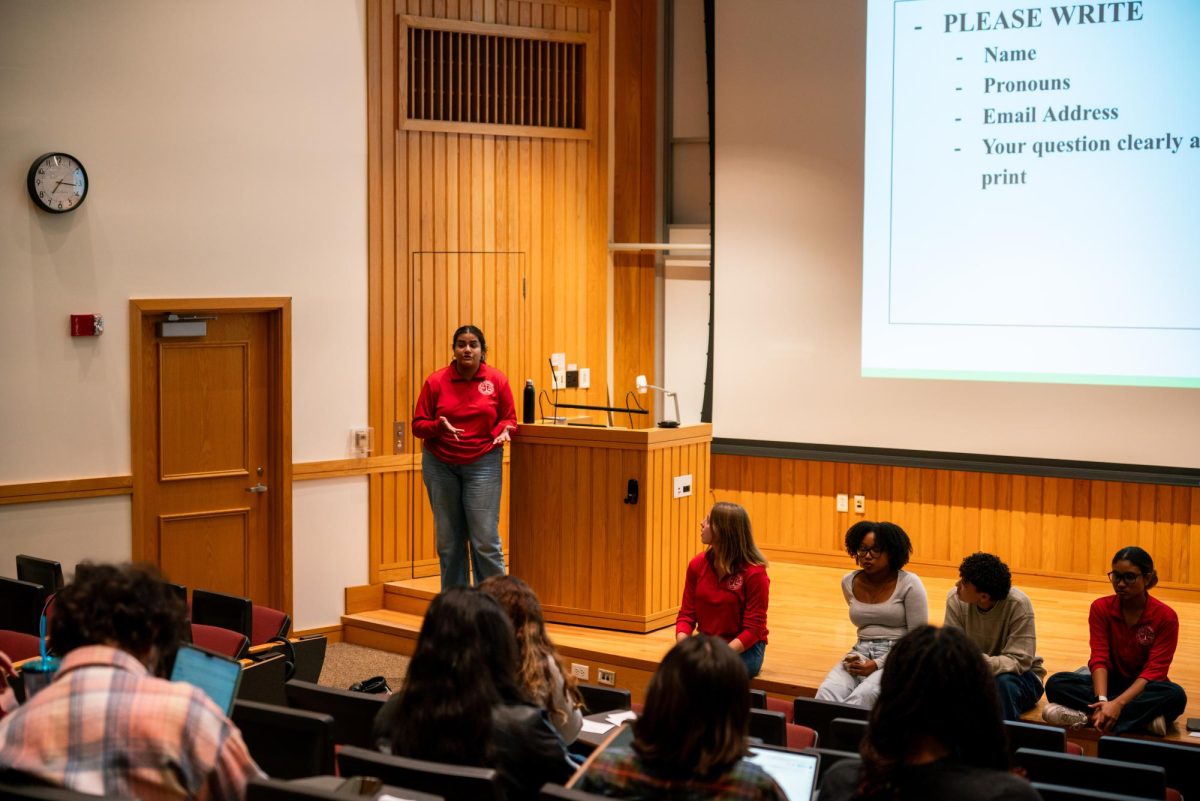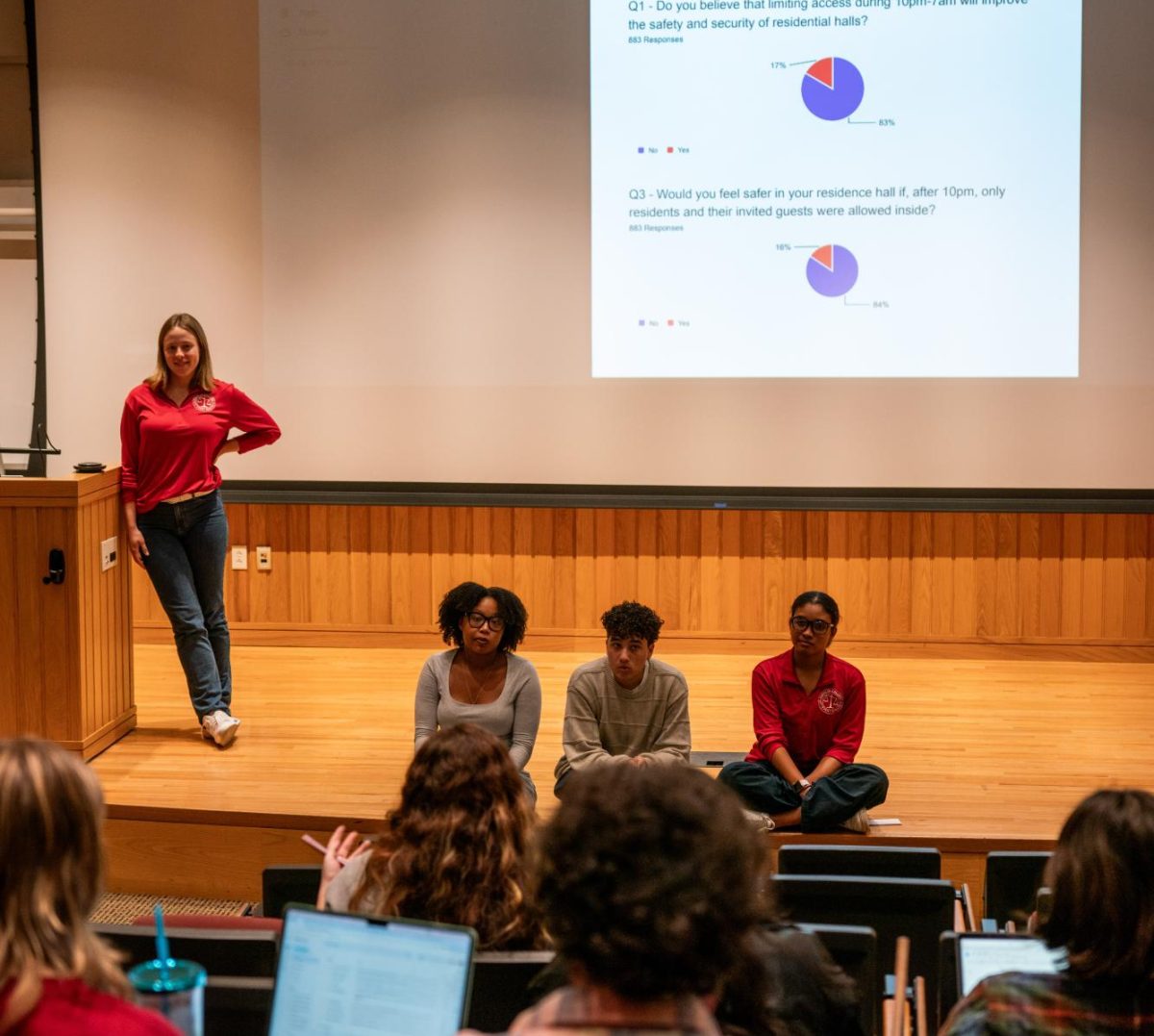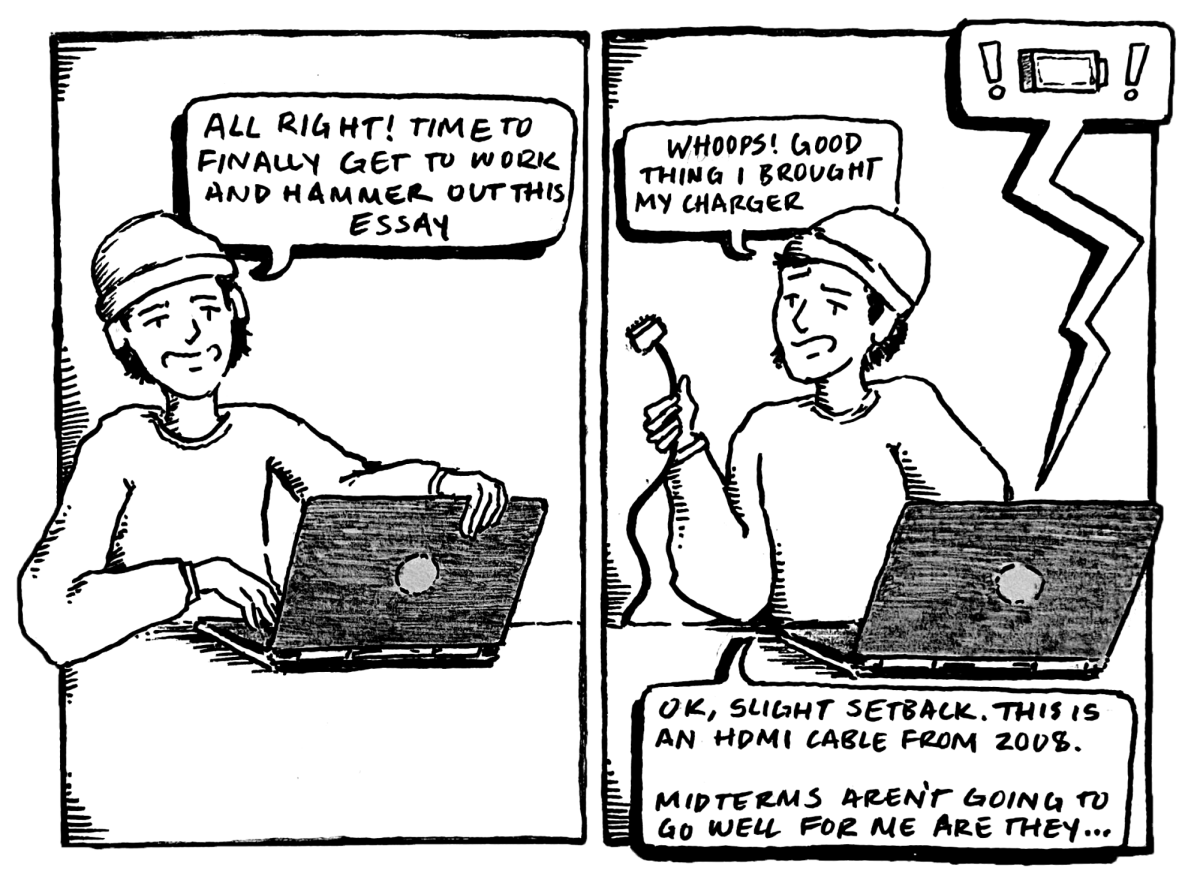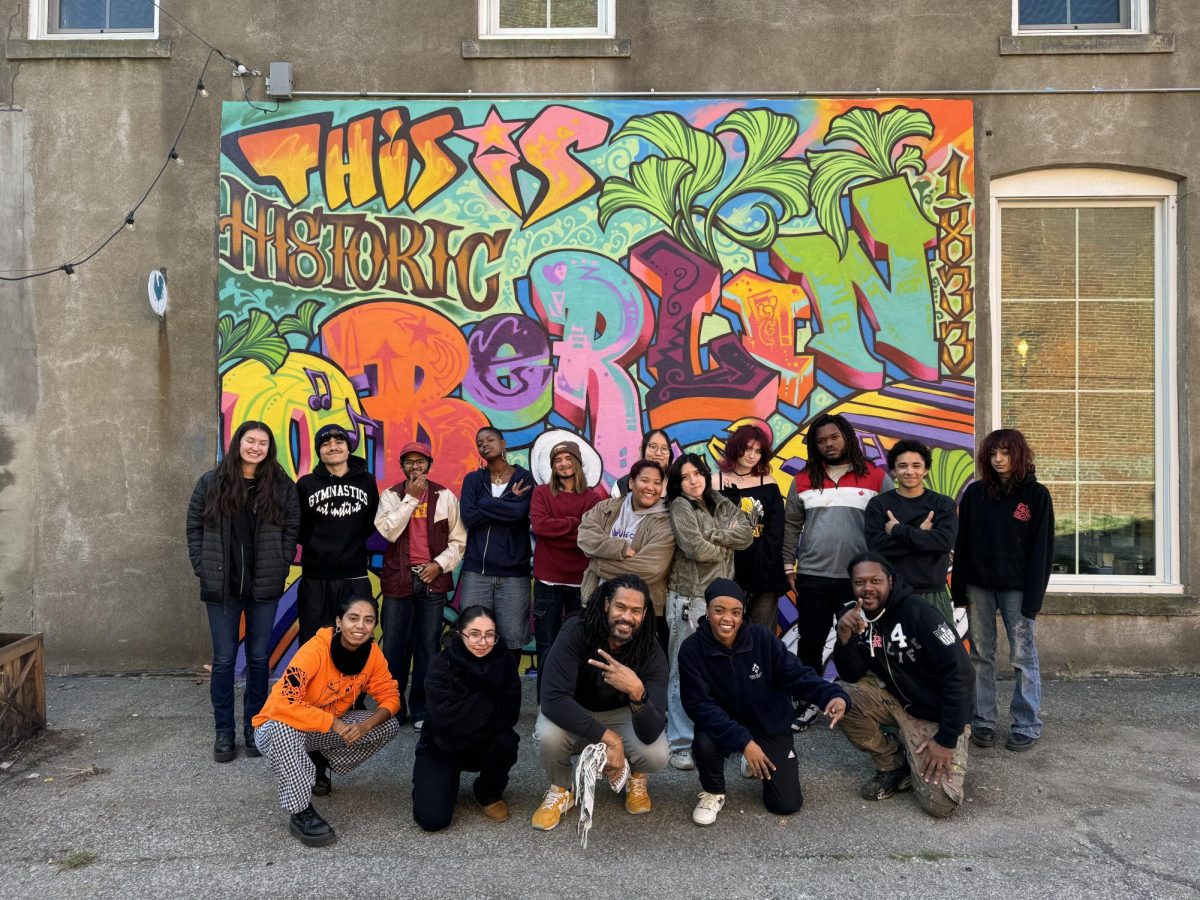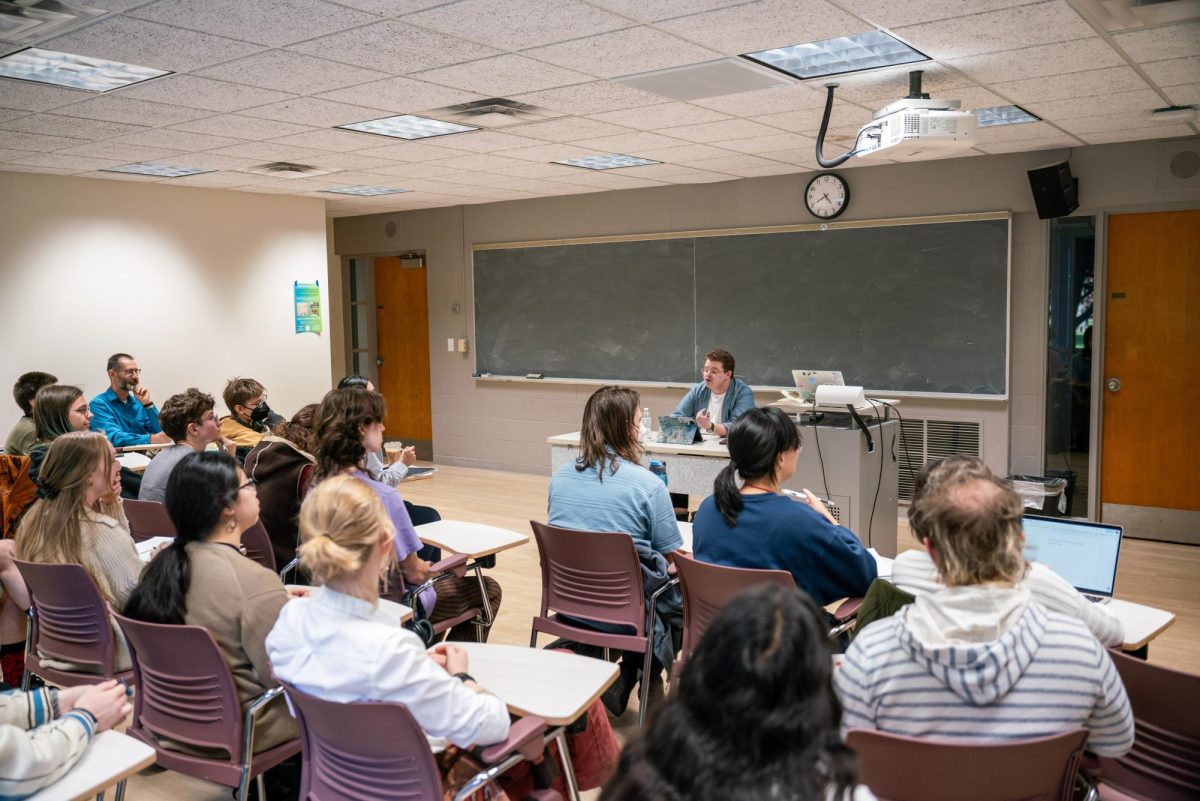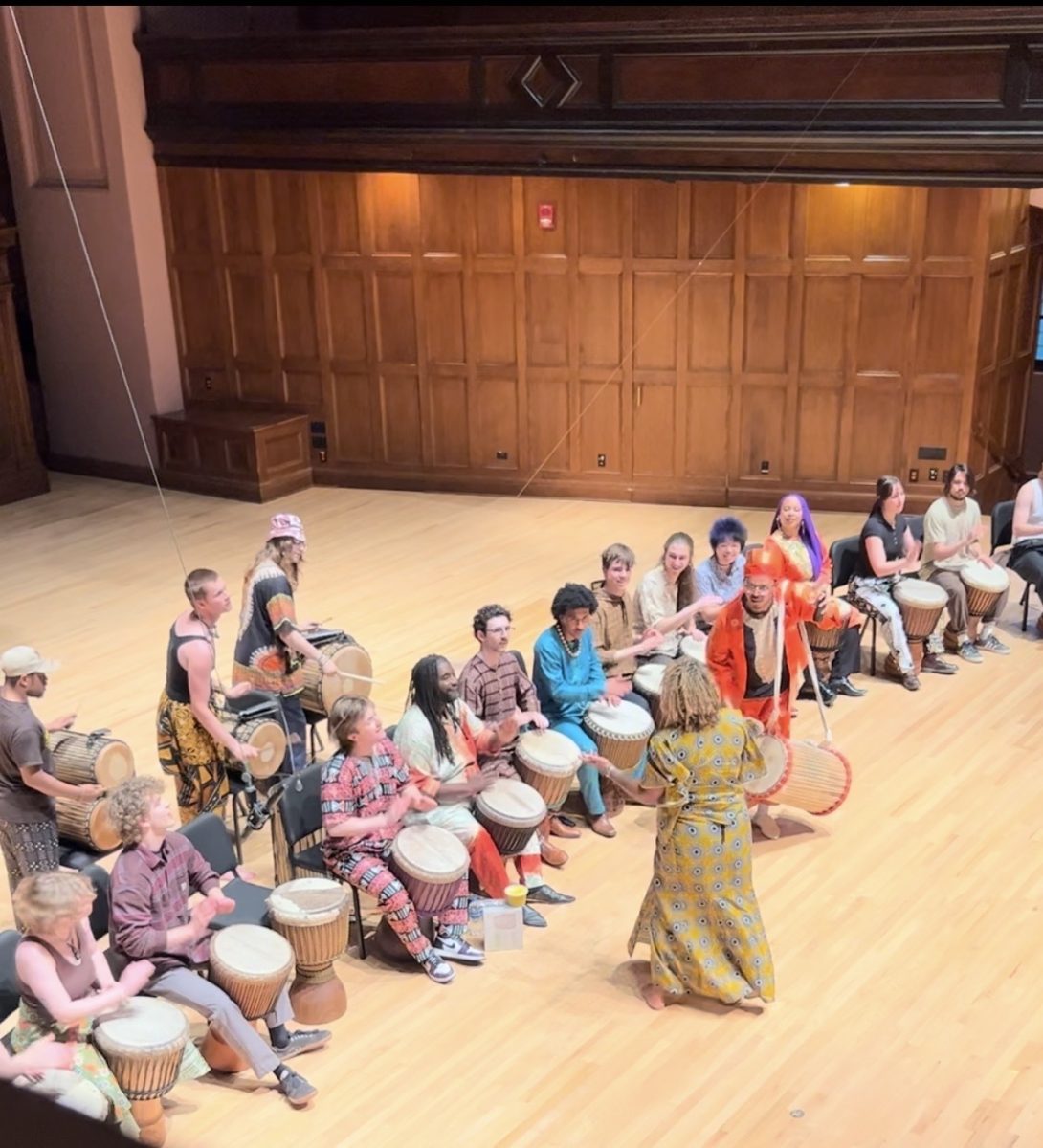Oberlin Film Co-op’s First Event Draws a Crowd
October 11, 2013
College senior Taylor Stanton has been collecting poor-quality YouTube videos for a few years, and on Saturday evening the Oberlin Film Co-operative gave him an opportunity to present his findings. The videos, each a few minutes in length, give a glimpse into the lives of the makers and are seemingly unrelated: a boy demonstrating how he’s “mastered the art of walking on water” by stepping in slow motion into a pool; a series of near-misses with death entitled “La Chance;” and P!nk falling off stage with a giant harness affixed around her waist. But each explore the effects of degeneration through compression or conversion to analogue on image quality, and, by extension, how they have affected our shared memory of the videos. “Each of them has their own distinct charm,” Stanton said.
About 30 viewers spread out on oriental rugs in the high-windowed living room of the apartment above Ade’s Place to observe the silliness of what we watch, record and feel the need to share on the internet. The film lasted about half an hour and gave small snapshots of life from the past 20 years. Each film was blurred and their titles included more than a few exclamation points. The titles themselves serve as a commentary on what we expect from these media. A video evokes some kind of excitement we fail to extract from simply viewing it only when it is slowed down, sped up, chopped and spliced to make a point. A VHS-recorded interview with director Harmony Korine on the Late Show about his 1998 novel, A Crackup at the Race Riots, in which he wryly refuses to endorse his own book, did have a specific connection to his most recent and most successful movie, Spring Breakers. The noise of the VHS and the pixilation resulting from compression made the video seem that much older. Another highlight was a film of Japanese punks getting ready for a concert, waving at the camera and explaining how 15 people can pack into one white van. The date of the recording — March 21, 1997 — was visible in the lower right corner, and the white outlines around each brightly colored mohawk and studded leather jacket showed the film’s true age.
The audience couldn’t help laughing at the extended ridiculousness of an enormous and fantastic setup of dominos falling, combined with the commentary from the creator and heavy metal playing in the background. At the end of the sequence, a happy-faced balloon slowly rises up and a man gazes at it with a grimace. It’s then shown in fast motion, then again in slow motion. The end of the film says, “Sorry for bad quality :/” and reminds the viewer that the director’s YouTube account, “MrFunnyProducti0ns,” has a “0” instead of an “O.”
The films were entertaining, but left one curious as to why poorly recorded home videos are so gripping to our generation. Is it our obsession with analogue? An obsession with memory in general? A backlash against all the amazingly, sharply recorded dramatic sequences we see on television and the silver screen? The desire to be reminded that life is often far simpler? Perhaps these poorly recorded media are most similar to the way we remember things as they happened but blurred and cut to only show the highlights.





